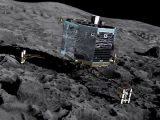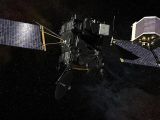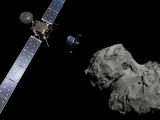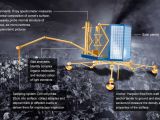There is this news that hit the public earlier this week and that sent the world into a frenzy. No, I am not talking about Kim Kardashian’s attempt to break the Internet by releasing a couple of photos that left nothing to the imagination, supposedly for the sake of art.
I’m talking about the European Space Agency’s announcement that its Philae spacecraft had successfully landed on Comet 67P/Churyumov-Gerasimenko. That’s right, this past November 12, a spacecraft made it on the surface of a comet.
Mind you, I am the first to admit that the fact that a spacecraft is now traveling through space on the back of such a celestial body isn’t going to change anybody’s life here on Earth. On the contrary, it’s business as usual for us ordinary folks.
Still, this does not change the fact that Philae’s landing on Comet 67P/Churyumov-Gerasimenko is something we should all be happy about. It’s a one-of-a-kind achievement and it should be celebrated as such.
First off, here’s what you have to know about this mission
The Philae lander was carried all the way to Comet 67P/Churyumov-Gerasimenko by the European Space Agency’s Rosetta spacecraft. The two left Earth on March 2, 2004, and reached their destination nearly a decade later.
Thus, it was earlier this year, on August 6, that Rosetta managed to get close enough to the comet to place itself into its orbit. The spacecraft has been circling the celestial body ever since and will continue to stalk it for several months to come.
As detailed by the European Space Agency, Rosetta is expected to accompany Comet 67P/Churyumov-Gerasimenko on its journey towards the Sun. While traveling alongside it through space, the spacecraft will closely monitor the celestial body’s behavior.
The Philae lander broke free from the Rosetta spacecraft on November 12, at 08:35 GMT / 09:35 CET. The spacecraft took about 7 hours to make it to the surface of the comet, and the signal confirming the landing reached Earth at 16:03 GMT / 17:03 CET.
Having attached itself to the celestial body, the Philae lander got busy snapping photos of its new home. What’s more, recent news says that, this past Friday, the spacecraft even drilled into the comet. Unfortunately, it eventually ran out of power and was forced to enter hibernation mode.
The good news is that, should it manage to deploy its rechargeable secondary battery, which relies on sunlight to keep up and running, the European Space Agency’s lander could remain operational until March, 2015.
So, a spacecraft is sitting on a comet. What’s all the fuss about?
For starters, it must be said that the Rosetta spacecraft, the Philae lander and Comet 67P/Churyumov-Gerasimenko are now located at a distance of about 511 million kilometers (317 million miles) from our planet.
Just to put things into perspective, you should know that the distance between the Earth and the Moon is one of 384,400 kilometers (about 238,800 miles). The fact that Rosetta and Philae successfully made it this far from home is, in itself, pretty amazing.
Still, it’s not figures like these ones that make this mission so very special. The fact of the matter is that Rosetta is the first spacecraft ever to orbit a comet, and Philae is the first ever to land on one.
This is why the European Space Agency is still celebrating, this is why the news about the landing took the world by storm, and this is why people will keep talking about this mission decades from now.
If you’re wondering why anyone would ever want to spend buckets full of money just to have a spacecraft land on a comet, the answer is pretty simple: the scientists behind this mission aren’t just studying ginormous space rocks.
These guys are peering into the origins of the Solar System and, consequently, the origins of life on our planet. You see, it’s not their size or the fact that they are mind-bogglingly far away from us that makes comets special.
It’s the fact that these cosmic boulders are icy remains of the cloud of dust, gas and ice that formed the Sun and all the planets now orbiting it that makes scientists want to study them. Simply put, comets hold the key to figuring out how we ended up being a part of the universe.
Thus, scientists expect that, with the help of Rosetta and Philae, they will manage to figure out whether comets were the ones that made it possible for life to emerge on our planet by bombarding it and delivering water and simple organic molecules to its surface.
What’s more, this first-of-its-kind study will help shed new light on what our Solar System looked like in its early days. This is because, seeing how it is a relic of the formation of the Solar System, Comet 67P/Churyumov-Gerasimenko can offer an insight into the makeup of our cosmic home 4.5 billion years ago.
True, Philae’s and Rosetta’s findings are unlikely to turn our lives topsy-turvy. Then again, knowledge is important it itself and not for what it can offer us, and such inquiries into where we come from can at least help us gain a better understanding of our place in the universe.
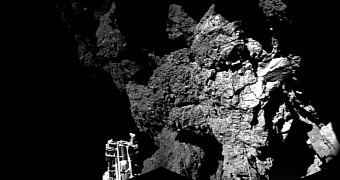
 14 DAY TRIAL //
14 DAY TRIAL // 
